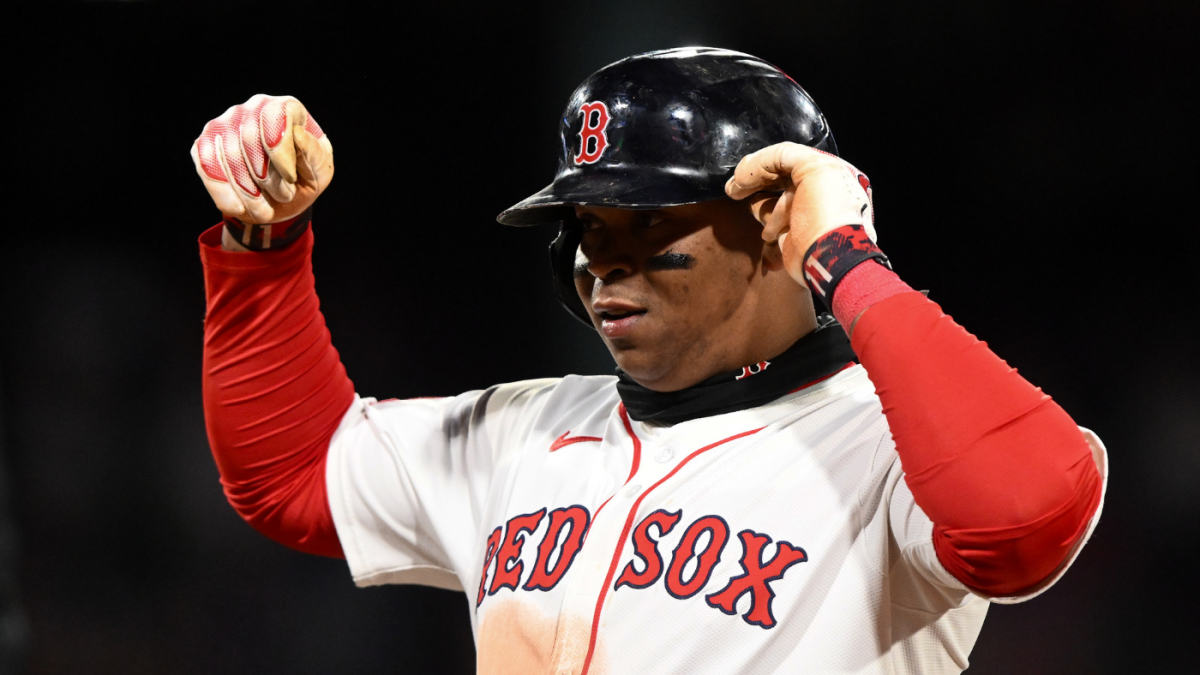The Rafael Devers Trade: Evaluating the Major League Baseball Shake-Up
The recent blockbuster trade sending Rafael Devers from the Boston Red Sox to the San Francisco Giants marks a seismic shift in Major League Baseball’s landscape. This deal, packed with implications for teams, players, and fans alike, offers a fascinating case study on balancing immediate star power with developmental potential. Exploring the layers of this transaction reveals a complex web of winners and losers, strategies, and future possibilities across the league.
Setting the Stage: Understanding the Trade’s Context
Rafael Devers has been a linchpin for the Boston Red Sox, renowned not only for his offensive skills but for embodying the team’s fighting spirit. With a strong batting average around .272, an impressive on-base percentage surpassing .400, and notable slugging prowess through 15 home runs in just 73 games this season, Devers has anchored Boston’s offensive line. His presence signified both proven performance and a homegrown symbol for the franchise.
In exchange, Boston receives a package featuring promising pitching talents: right-hander Jordan Hicks, left-hander Kyle Harrison, versatile prospect James Tibbs, and minor-league pitcher Jose Bello. This trade reflects Boston’s shifting focus towards rebuilding by bolstering their pitching depth, highlighting a strategic move toward long-term competitiveness rather than short-term star reliance.
Identifying the Winners: Giants, Red Sox, and the League
San Francisco Giants: Immediate Upside with Established Talent
The primary beneficiary is the San Francisco Giants. Acquiring Rafael Devers catapults their infield strength and injects formidable firepower into their batting lineup. Devers’ dual ability to combine power hitting with consistent average neatly complements the Giants’ existing lineup, positioning them as formidable playoff contenders. This move signals the Giants’ intent to prioritize immediate success by leveraging proven talent over developmental uncertainty.
Boston Red Sox: A Calculated Step Toward the Future
Though losing a franchise cornerstone initially appears detrimental, Boston’s haul of young pitching assets positions the team for potential long-term gains. The prospects acquired—particularly Harrison and Hicks—could evolve into frontline pitchers, addressing a perennial need in today’s pitching-centric, analytics-driven game. This trade embodies a forward-looking philosophy, emphasizing sustainable roster flexibility and paced rebuilding over fleeting glory.
The Broader MLB Ecosystem: Energizing Competition and Fan Engagement
Trades of this magnitude reverberate across the league, injecting vitality into rivalry dynamics and playoff races. As multiple divisions adjust to these shifts, fan engagement surges through increased unpredictability. These high-stakes transactions amplify MLB’s competitive balance and maintain the league’s dynamic narrative landscape.
Candid Look at the Losers: Fans, Timing, and Player Transitions
Red Sox Fans: Emotional and Cultural Impact
For Boston’s fanbase, the trade stings beyond the statistics. Devers wasn’t just a player; he was a symbol of hope and homegrown excellence. His departure, reminiscent of past franchise stars leaving, may diminish short-term morale and fan enthusiasm. This emotional toll represents a less tangible but critical cost of franchise strategy.
Immediate Competition: Red Sox’s Mid-Season Gamble
The timing of Devers’ departure, mid-season on June 15, raises questions about Boston’s current competitive intent. Given the team’s potential to vie for contention, this trade signals a retreat that could cost valuable wins and momentum. This short-term setback underscores the delicate balancing act between rebuilding and staying relevant.
Rafael Devers’ Adjustment Challenges
Transitioning mid-season to a new team involves more than logistical shifts—it affects performance and mental focus. Devers faces the pressure to adapt quickly, meet heightened expectations, and justify the trade’s cost. Such challenges could temper his immediate contributions despite the long-term prospects.
Strategic Reflections: What This Trade Reveals About MLB’s Evolution
The Devers trade epitomizes a growing pattern in modern baseball management. Teams juggle dual objectives: pursue immediate impact to excite fans and maintain playoff relevance, and cultivate young talent to ensure sustained competitiveness. Boston’s approach typifies a pitching-centric, development-focused strategy that leverages analytics and depth-building, while San Francisco adopts a ‘win now’ stance, acquiring established stars to accelerate success.
This transaction also influences how other franchises approach trades, especially near deadlines. The dual pressures of fan expectation and team viability compel teams to weigh blockbuster deals much more cautiously, balancing the allure of instant gains against the risks to future stability.
Closing Thoughts: A Trade That Reshapes MLB’s Narrative
The Rafael Devers trade transcends being a mere player exchange—it recalibrates team identities and league dynamics. The Giants emerge clearly strengthened for a postseason push, while the Red Sox embark on a path fortified by promising pitching prospects aimed at long-term resurgence.
As the dust settles, players adapt and fans recalibrate expectations. Over coming seasons, the true outcomes will reveal themselves through prospect development and performance trajectories. This trade stands as a vivid reminder of MLB’s perpetual dance between ambition and strategy, where every move carries the potential for triumph and heartbreak alike. The pulse of professional baseball beats strongest at these crossroads, making the league’s stories endlessly compelling.

